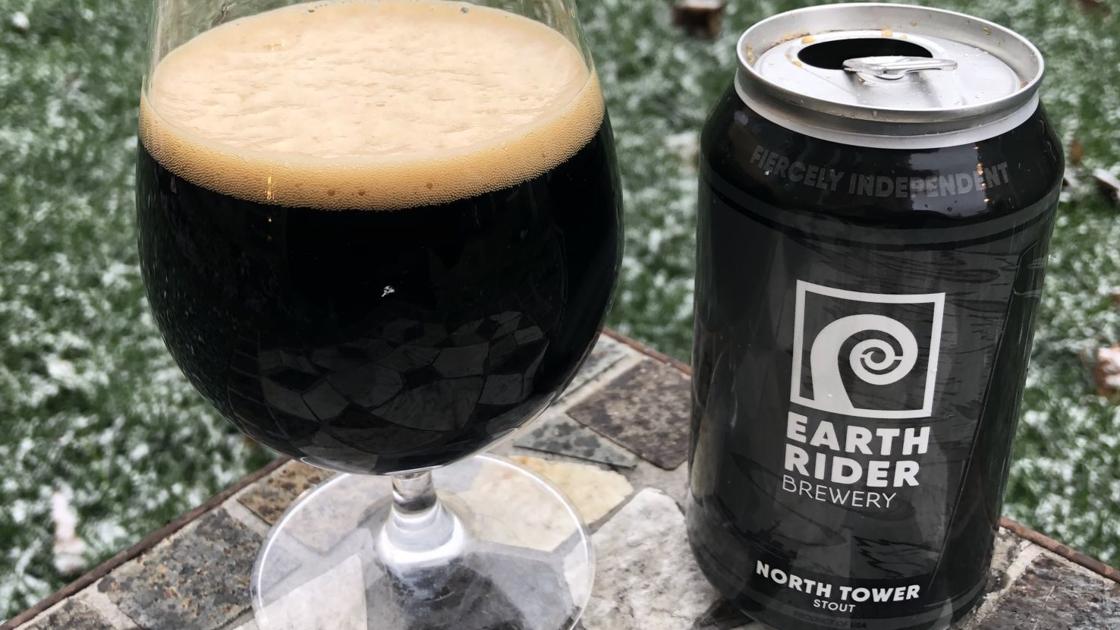
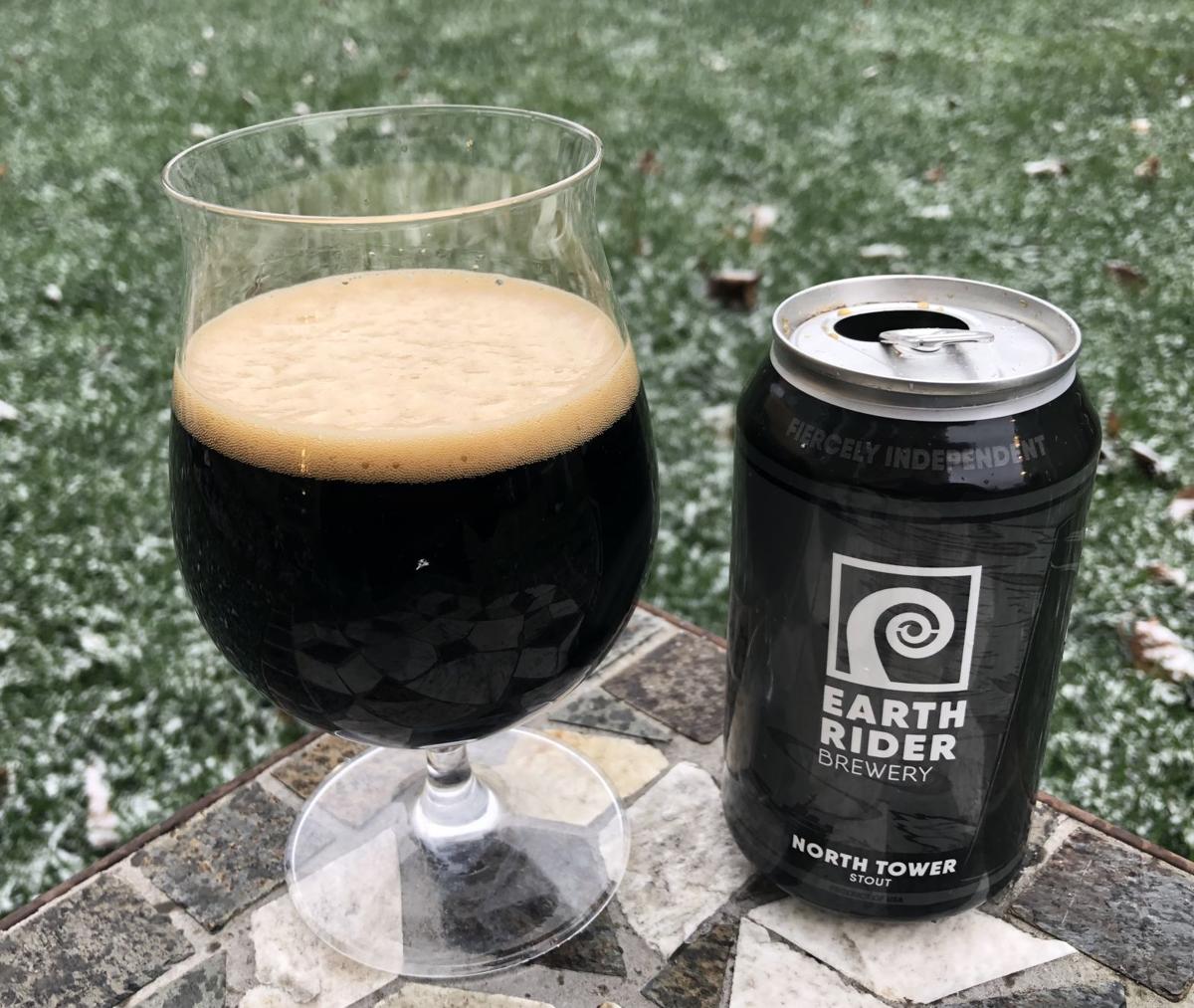
North Tower Stout by Earth Rider Beer is a deep, hearty beer that represents the North Country well.
You’ll forgive the beer geeks and industry folks across the country streaming the Great American Beer Festival’s virtual awards ceremony for the quizzical looks when Wisconsin’s winners were announced.
The four Wisconsin breweries to medal this year in craft beer’s most prestigious competition are not exactly household names (yet!), even to those who know Wisconsin’s beer scene relatively well.
One trades entirely in gluten-
free beers, an important but often overlooked niche in the beer world. One focuses on English-style ales, about as far as you can get from trendy hazy IPAs and overfruited sours. One named its brewery and many of its beers, including its medalist, with butt puns. Most of the breweries are very small, and none brewed its first drop before 2015.
But GABF’s competition is not so much where big-name breweries take victory laps as it is where breweries make their names on a national stage.
Befitting 2020, it was somewhat of a down year for Wisconsin breweries. Last year Wisconsin breweries won seven medals including as many golds (five) as the combined bronzes and silvers this year. But none of that, of course, diminishes this year’s individual honorees.
Madison’s own ALT Brew won silver, its first GABF medal, for 1808, a gluten-free robust porter named after its Wright Street address.
McFleshman’s Brewing of Appleton, which opened a gorgeous English pub-style taproom in downtown Appleton in 2018 and always has at least one cask beer on pull, won bronze for its MSB special bitter.
And H.H. Hinder Brewing — rhymes with “binder” — won bronze with a scotch ale called Wee Heavy HINDER. The small Waupaca brewery’s website invites you to come in and grab a Hinder; regular offerings include Cafe Keister, Butt Light, Red Tail Amber and B.A. Weisseass.
The biggest name in the Badger State’s winner’s circle this year was Superior’s Earth Rider Brewery, which took home two medals — for Royal Bohemian Pilsner and North Tower Stout.
Earth Rider opened in late 2017 and has grown quickly, brewing more than 3,400 barrels in the 12 months ending in August, according to filings with the state Department of Revenue. Earth Rider’s beer is sold across northern Minnesota, northwestern Wisconsin and the Twin Cities. It’s also dipped into Wisconsin’s biggest beer markets, sending beer to bottle shops in Madison and Milwaukee for a little over a year.
That’s a lot of shelf exposure, but Earth Rider also already had some GABF cred, winning a gold medal for its Duluth Coffee Pale Ale last year.
Far be it for me to confirm the work of the GABF’s more qualified judges, but both of this year’s nominees sure seem hardware-worthy. Royal Bohemian is a simple, delightful take on Czech (Bohemian) pilsner: lightly malty with a little spicy-herbal noble hop middle on a light, dry body. Just a touch of that lovely hop flavor lingers into the finish, though it’s not particularly bitter. The beer won in the keller/zwickel category, which is an unfiltered class of light lagers; Royal Bohemian has a light haze that seems to add a bit of depth here.
But, c’mon. Given the time of year, of course this week’s beer is going to be a belly-warming stout.
North Tower Stout
Style: Oatmeal stout
Brewed by: Earth Rider Beer, which has a brewery and separate taproom in the shadow of the towering silos of Superior’s sprawling port. Tower Avenue runs past the taproom and into the port.
What it’s like: Does a GABF medal-winning oatmeal stout from Wisconsin sound familiar? Yep, Madison’s Vintage Brewing won bronze in the category in 2015 for Scaredy Cat, and while there are differences between the two, if you like one, you’ll also like the other.
Where, how much: Six-packs of 12-ounce cans are usually around $10 at Madison’s finer bottle shops.
Booze factor: North Tower has a belly-warming but not overwhelming 6% ABV.
Up close: North Tower pours a good stouty black with a khaki head that lasts nicely through the glass. You’ll catch whiffs of chocolate cake with dark ganache and a gentle herbal overnote. The sip is smooth, soft and satisfying — malt and mocha-forward, with a touch of plumlike character poking through as it warms, and its moderate bitterness plays out as balanced, not sharp. Oats don’t do much to the flavor of stouts, rather imparting creaminess to the mouthfeel that is prominent in North Tower. It’s a deep, hearty beer that represents the North Country well.
Bottom line: 4½ stars (out of five)
Kid Kölsch
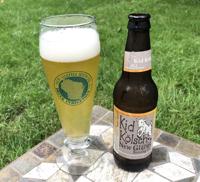
New Glarus Kid Kölsch
Honestly, this could have been a list of one beer this year. I do not remember the last time I was so taken with a beer as I was with Kid Kölsch, New Glarus’ latest masterstroke. I wrote a breathless review shortly after this German-inflected ale dropped in July, and although I rarely stopped drinking it through fall, every time I came back to it, I wondered why I strayed. It’s … I mean, I don’t know if a beer can ever be perfect, but it’s delicate but flavorful (gently sweet, floral and fruity), superbly balanced, has an amazing mouthfeel and won’t get you bombed if you have three of them. That just might be perfect. If it doesn’t come back in 2020, I’ll meet you at the brewery and we can riot.
Honorable mention: I feel like I write something like this every year, but New Glarus proved again this year why it’s Wisconsin’s best brewery. In addition to its underrated (yes, underrated) year-round and seasonal lineup, it debuted two new Thumbprint beers that could have made this list on their own: Kühler, a lambic-type sour ale infused with tea and lime for an Arnold Palmer-type profile; and Berliner Apfel, a tart wheat ale fruited with Kickapoo Valley apples.
Lakefront Black Friday V
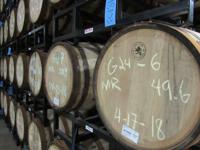
Lakefront Black Friday V
Terminal velocity is the highest speed you can achieve when falling through the Earth’s atmosphere. Gravity is always accelerating that skydiver, but at some point wind resistance takes over and she won’t go any faster. For the last few years, as the spirit barrel arms race has advanced, I’ve wondered if there’s a terminal velocity to barrel-aging beer. Most barrel-aged stouts sit in wood for six to 12 months. A few age for 18 months, and some remarkable ones -- Central Waters’ 2016 release Ardea Insignis being the most notable around here -- age for three years or a bit longer. Before I tried Black Friday V -- Lakefront’s annual imperial stout aged an astonishing 70 months in brandy barrels -- I figured this would be the beer that found it, that proved that three years and twice that long have basically the same effect. I was wrong. It was an astonishing, intensely rich beer, with an enormous amount of woody, kind of plumlike barrel character that would have overwhelmed many beers, but the 13.4% ABV Black Friday was up to the task. This $100 bottle, sadly, was only available at the brewery on the day after Thanksgiving, and given how these barrels essentially got lost for a while, I wouldn’t count on it coming back anytime soon.
Honorable mention: One of the most underrated beers in Central Waters’ Brewers Reserve series of barrel-aged beers is its Bourbon Barrel Barleywine, and this fall the brewery’s annual release, aged for about a year in bourbon barrels, was joined by a limited amount of BBB aged two years and three years in the barrels. Sold on draft and in cans only at the brewery, the flight was a fascinating study in what time and wood does to a beer, the three-year variant being my favorite. And the best anniversary beer I had this year -- albeit just a short pour -- was Tyranena Twenty, an imperial stout aged in bourbon barrels, with a portion aged further in Madeira barrels. That exotic fortified wine barrel came through in just the right amount, adding a vinous finish to a typically exceptional stout from Tyranena.
City Lights Brewing's Hazy IPA
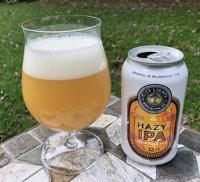
City Lights Hazy IPA
As a beer writer in Wisconsin, the Great American Beer Festival judging contest should be confirming what I already know about Wisconsin beer -- like the 2019 silver medal awarded to Third Space Brewing’s Unite the Clans Scottish ale. Yeah, I know, that’s an excellent beer. But this year GABF medals opened my eyes to one beer in particular I was overlooking: this hazy IPA from Milwaukee’s City Lights Brewing. My read on City Lights’ beers had been solid but not essential, sound but not all that interesting. Hazy IPA wrecked that assessment. It’s a spot on iteration of the style, as I’ve come to expect from City Lights, but where its other beers seemed to capture the outline of their styles but not their potential, Hazy IPA is a dynamo. It’s a tropical-citrus bomb placed second out of 348 entries, in GABF’s most popular style. And to think, it won that accolade with zero consideration to its value proposition, a nice feather in its cap at $8-$10 per six-pack.
Low pHunk
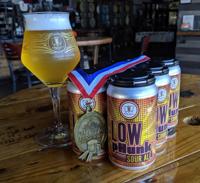
MobCraft Low pHunk
This May, I rode one of those pedal tavern things for a work outing. I wasn’t particularly proud of it until I was a couple beers in and having fun. Like, a lot of fun. I don’t regret it. And the fun fuel for myself and a few of my fellow pedalers that evening was this easy-drinking but nuanced sour ale. MobCraft makes it using the solera method in which each batch is blended with a blend of all previous batches, imparting some of the microorganisms that give the beer its unique flavor profile. There’s a touch of funk underneath a bright, lemony-citrus, gently tart character. If that sounds like a winner for a summer beer, you’re right. Low pHunk was a go-to patio and golf course this summer even before it won gold at GABF in the American-style sour ale category.
Lake Louie Warped Speed
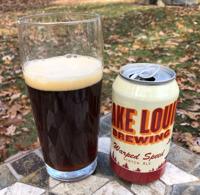
Lake Louie Warped Speed
What can a landmark scotch ale in the local beer scene do to be a Beer of the Year nearly 20 years after its first release? It can survive. This summer, Lake Louie was acquired by Wisconsin Brewing, bringing two of Wisconsin beer’s greatest characters -- Tom Porter and Kirby Nelson -- under one roof. The deal came at a time when Lake Louie had been sloughing sales and staff as Porter battled through health problems and Wisconsin Brewing was retooling and diversifying its business. In late October, Porter and Nelson presided over delivery of the first batch of Warped Speed made and -- in a change -- canned at Wisconsin Brewing’s brewery in Verona. The beer inside is better than ever: A smooth, caramelly but perfectly balanced scotch ale that begs for another, bigger swallow. And to think, all this came after it won the Beer Bracket last spring. What a year!
Glazer Bean
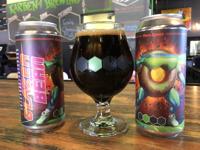
I liked but didn’t love my four-pack of Glazer Bean, but it’s still a slam-dunk Beer of the Year because it could be the dawn of a game-changing opportunity for Karben4. The coffee chocolate stout, brewed in collaboration with and exclusively for Kwik Trip, puts Karben4 in an elevated position in the beer coolers of hundreds of convenience stores across the state. If sales are strong enough -- and after a blitz at its November launch, the beer had a tough time staying in stock -- there’s also a chance for an ongoing series featuring Kwik Trip products. Who knows, there are hundreds more Kwik Trips in neighboring states, too. See you next time, indeed.
Honorable mention: When I visited Karben4 to talk Glazer Bean with brewmaster Ryan Koga, I wasn’t expecting to come home with three stories. The second: K4’s series of Barely Beer, fruited lagers that clock in around 3.1% ABV -- feather-light but big in fruit flavor. I took home a strawberry lemonade version that reminded me of the best parts of the Naturdays trend of 2019 and a cranberry-apple Barely Beer that was perfect at the Thanksgiving night card table. The third: This winter K4 became the second Madison brewery to join the hard seltzer wars, launching four flavors of a 4% ABV sparkling water. Between this and Ale Asylum’s Stray Forth label, launched in August, I don’t think this is a story I’m going to be able to avoid much longer. Stay tuned.
Untitled Art Double Apricot Double Milkshake
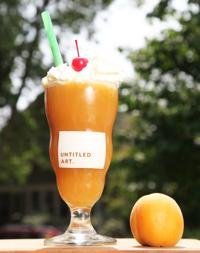
Untitled Art Double Apricot Double Milkshake
I have not been crazy about the milkshake IPA craze, in which a beer that was maybe identifiable as an IPA is dosed with lactose and vanilla, rendering it definitely not identifiable as an IPA, and usually souped up further with some fruit. But, dang it if sometime around midsummer, this doozy from the Octopi Brewing-based Untitled Art label squarely hit the mark. Sweet, creamy and fruity, I’m guessing as much from the hops as from the apricot. And it wasn’t even called an IPA! Hats off to that. If the powers that be at Untitled Art decide to make this one again -- they often don’t repeat beers -- I’ll be buying it again.
Honorable mention: Beer should be fun, and UA’s Rocket Popsicle Sour did that with flying colors this summer. Just in time for the Fourth of July, this neon blue raspberry sour was pretty tasty but looked very awesome in the glass.
Lakefront Lager
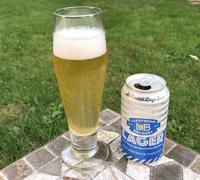
Lakefront Lager
The craft light lager trend continued robustly this year, and Lakefront Lager set Wisconsin’s bar for the style -- apologies to Ale Asylum’s Keep ‘er Movin’, a 2018 Beer of the Year. Light pale lager needs no explanation; it’s the most popular style in the world, and for a reason. And Lakefront Lager nails that formula -- a little sweet, a little bitter, and easy to drink -- most notably with a fantastic noble hop aroma. Besides Kid Kölsch, it was probably the beer I drank the most of this year. And I don’t even have a boat.
Got a beer you’d like the Beer Baron to pop the cap on? Contact Chris Drosner at chrisdrosner@gmail.com or follow him on Twitter @WIbeerbaron.
Receive the latest in local entertainment news in your inbox weekly!
October 31, 2020 at 09:00PM
https://ift.tt/3oNmvsO
Beer Baron: Virtual unknowns from Wisconsin shine at Great American Beer Festival - Madison.com
https://ift.tt/2NyjRFM
Beer
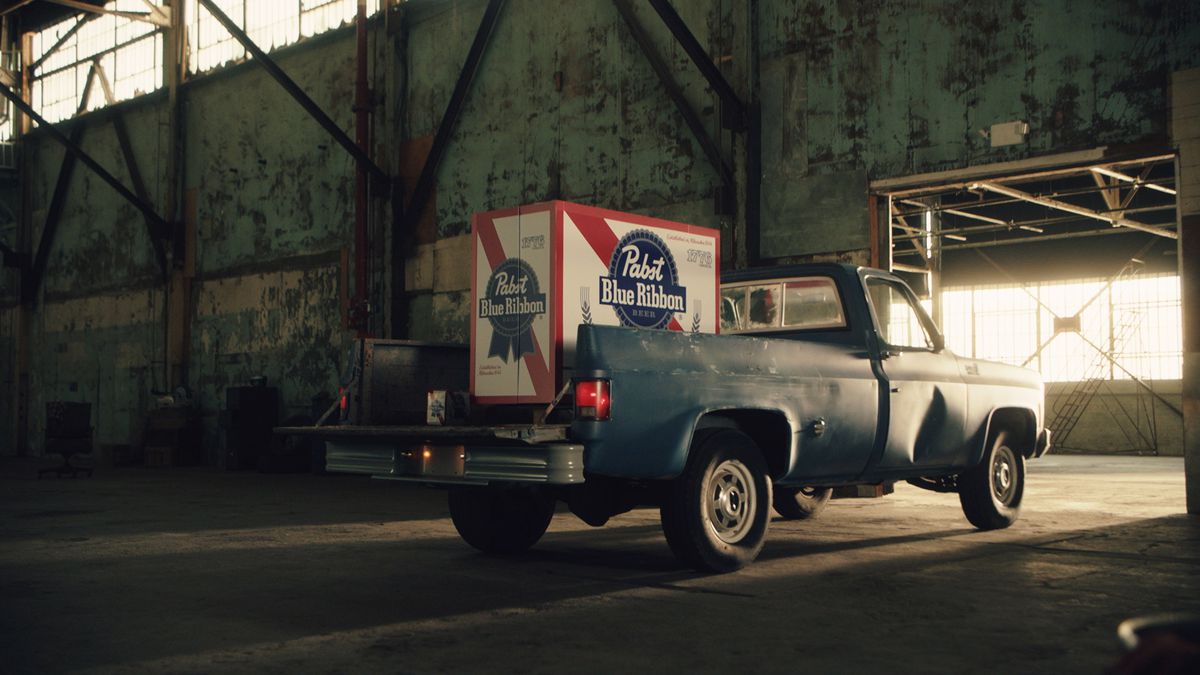
No comments:
Post a Comment